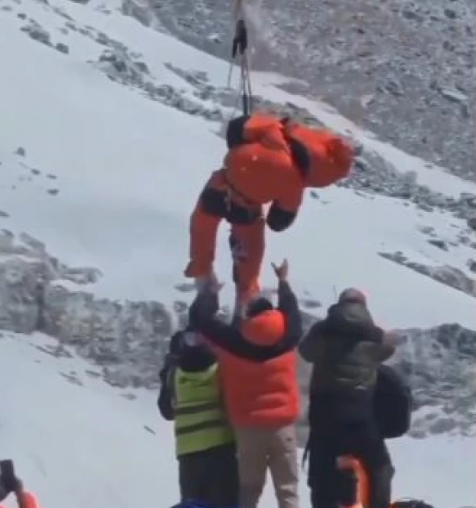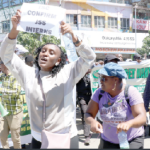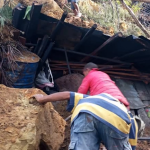After the tragic death of Kenyan mountain climber Cheruiyot Kirui during his attempt to summit Mount Everest without supplemental oxygen, there has been uncertainty surrounding the retrieval of his body.
Kirui was discovered deceased near the summit of the world’s highest mountain. Nepal government officials confirmed his passing, but due to the challenging conditions at such high altitudes, it remained unclear when or if his body would be recovered.
Recently, a video circulated on social media depicting an operation on Everest, with claims that Kirui’s body had been retrieved just meters from the summit. The footage showed a helicopter transporting a mountaineer’s body, which was received by fellow climbers.
However, a fact-check determined that the body shown in the video was not that of Kirui. Further investigation revealed that the video of the body recovery operation was originally shared on the Mountain. trekking Instagram page three weeks prior, indicating that it was unrelated to Kirui’s situation.
The social media page that circulated the video of the Everest operation typically shares videos and photos of mountaineers’ adventures on the mountain.
Regarding the retrieval of Cheruiyot Kirui’s body from Everest, uncertainty remains as to when this will occur, especially considering the challenging conditions on the mountain where other mountaineers’ bodies also remain.
Retrieving a body from Everest presents significant technical difficulties, including navigating steep and icy slopes. Furthermore, bodies often lie in inaccessible or hazardous locations, making retrieval efforts extremely risky.
Tragically, a number of Nepalese sherpas have lost their lives during previous operations to retrieve bodies from the mountain.
Moreover, the operation is costly, with estimates suggesting that repatriation efforts may amount to millions of dollars. These factors underscore the immense challenges and risks involved in attempting to retrieve bodies from Mount Everest.



